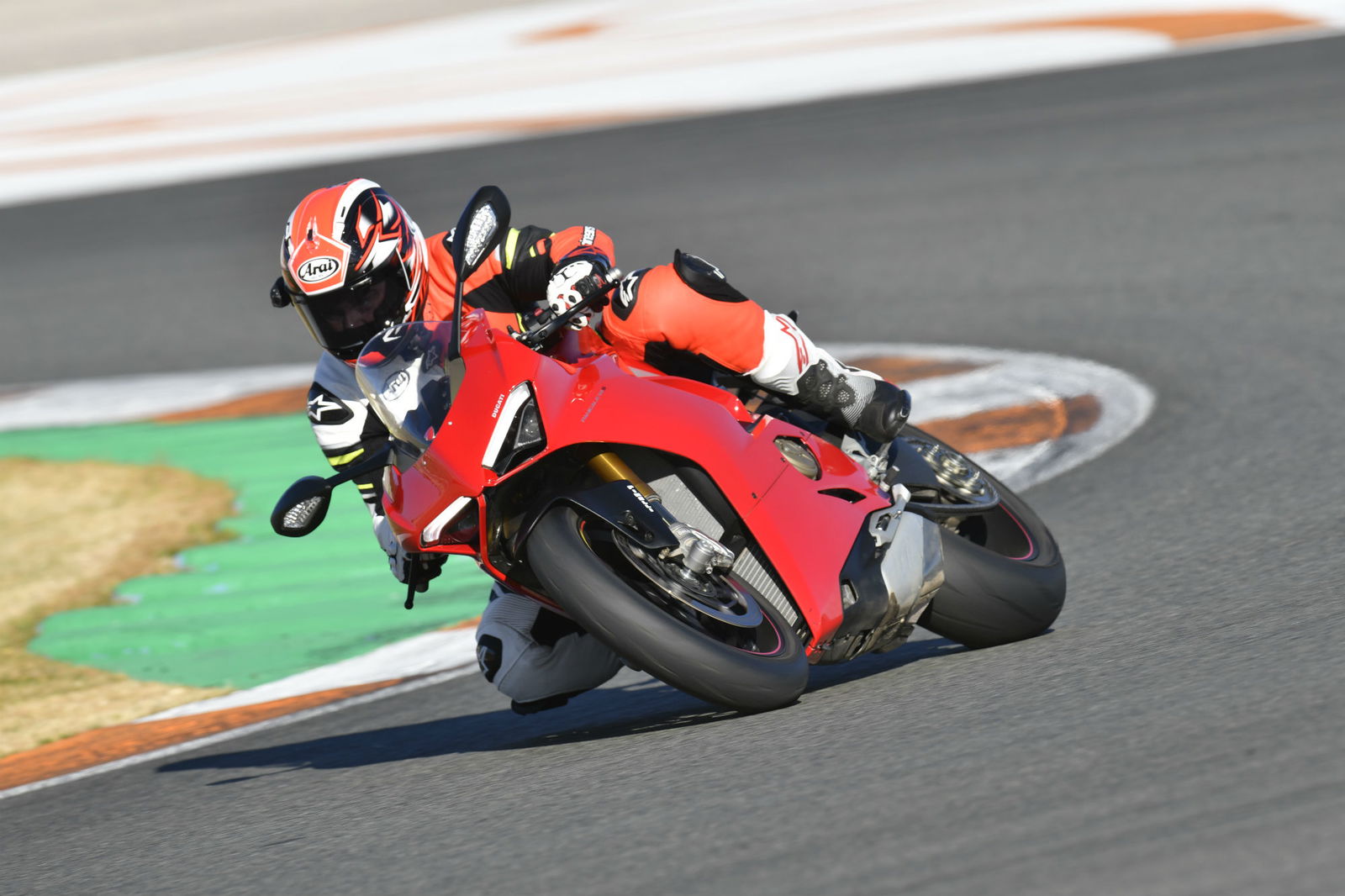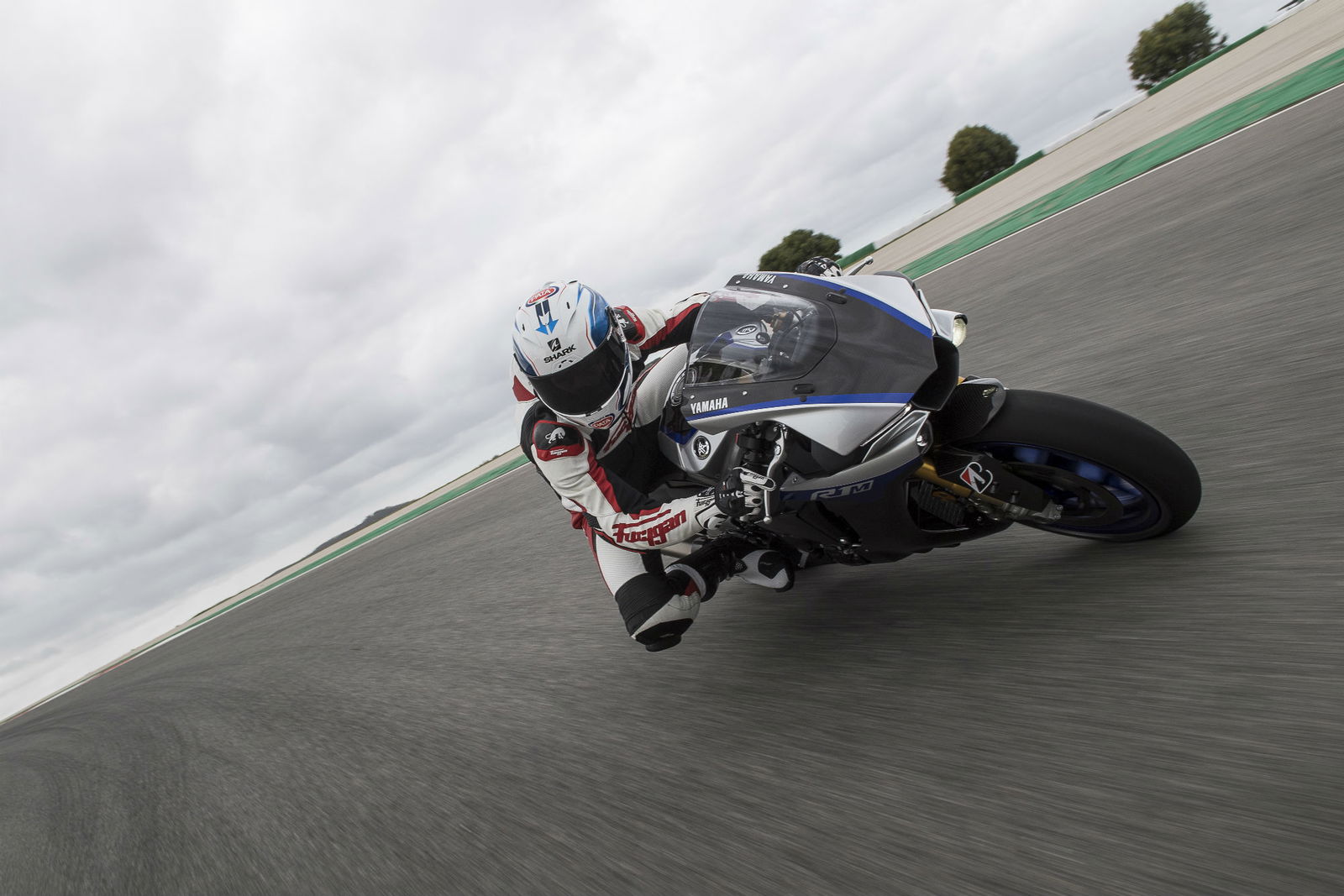First ride: Kawasaki Ninja H2 SX SE review
Charging into the future, Kawasaki’s Ninja H2 SX delivers more from less.

BIGGER-capacity engines. So far, that has been motorcycling’s answer to the problem of retaining performance while meeting demand for greater efficiency.
Not this time. Kawasaki’s answer in the Ninja H2 SX is supercharging.
It promises greater performance and efficiency from a given capacity. That’s why it’s one of the most exciting new motorcycles of the year. Engines can’t keep getting bigger indefinitely. The Ninja H2 SX points to a future in which we instead get more from less.
So it better be good. I’ve been to Portugal to find out whether it is.
Engine
Performance and economy has been the aim of the Ninja H2 SX, according Kawasaki. Not just to make something extreme, like Ninja H2 it takes its 998cc in-line-four engine from, but to offer ZZR1400-levels of power, at 200hp, with Versys 1000-levels of fuel economy, at 49mpg.
With revisions to make the engine more practical for road use, it’s a new sibling for the Z1000SX, “not a Ninja H2 with a pillion seat,” the firm was very keen to stress.
It’s almost as if they’re a little bit worried some sports-tourer riders might be put off by the extremes of performance associated with supercharging.
No one should be put off. Supercharged doesn’t mean super-aggressive. For the Ninja H2 SX, it means super-powerful but also versatile and manageable.
Between 10,000rpm and the red line at 12,000rpm, it sometimes makes a chirping sound. According to Kawasaki that’s the tips of the supercharger rotor blades breaking the sound barrier.
If it wasn’t for that, I’m not sure I’d know it was supercharged at all. It’s the only real clue it’s not simply a very powerful in-line-four. That and the badge on the engine that says ‘supercharged’.
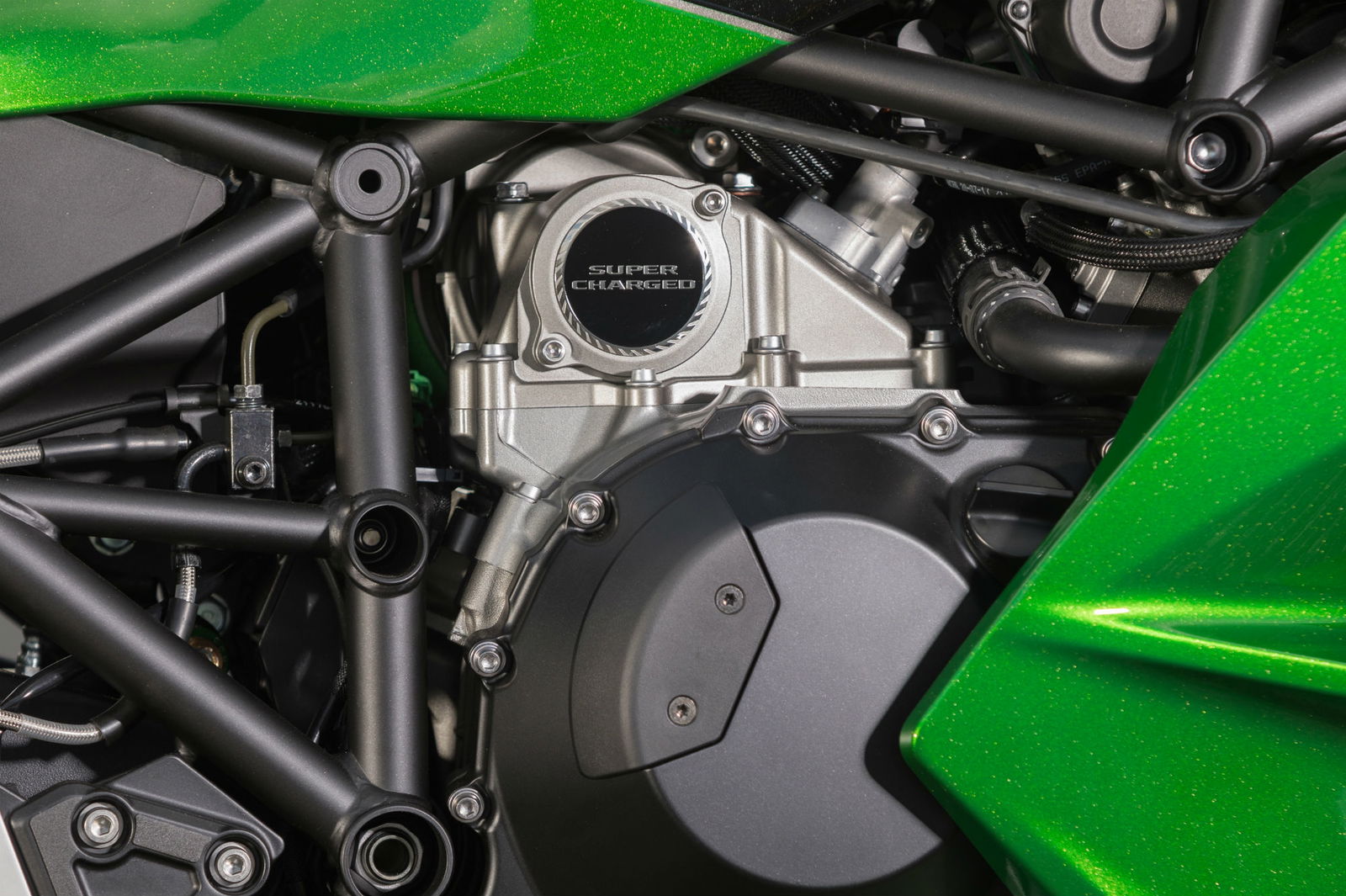
Of course, it can be extreme, with a monumental top end, but the journey through the range is smooth and manageable. You can hurtle from apex to apex, and swallow straights whole, changing gear to keep the needle near the top of the range. Or you can sweep from corner to corner at a gentler pace, enjoying the linear bottom-end and mid-range. The Ninja H2 SX will do either, and everything in between, to suit your mood.
There are three power modes: full, medium and low. Low gives you 50% of optimum power throughout the range, medium offers 75% and full provides… well, you can work that out.
Initial throttle response seems such a common weakness in new motorcycles, thanks to the demands on fuelling of emission limits, and the Ninja H2 SX doesn’t quite nail the problem. With gentle treatment, it’s possible to feed the power in seamlessly from nothing, but when you close the throttle again the drive is withdrawn suddenly and completely. The result is that you can still end up in a jerky on/off zone while trying to maintain constant drive through a turn, or at low speed in town.
The launch ride in Portugal consisted of a day on the road and a morning on track at Estoril, where the on/off tendency became more annoying.
Changing modes to medium or low smooths it out but that’s obviously at the expense of power.
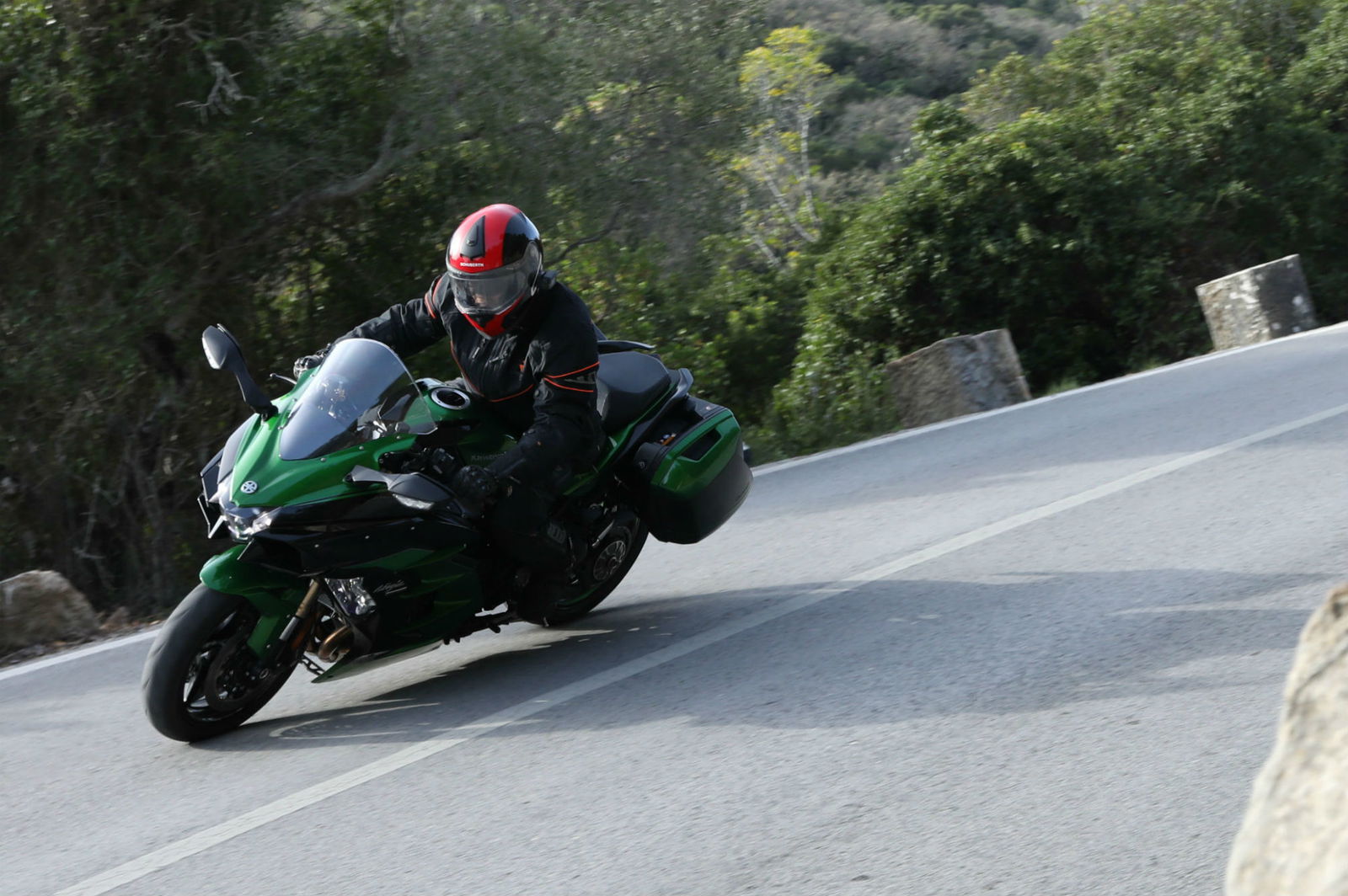
Handling
The Ninja H2 SX has a new steel trellis frame, similar to the Ninja H2’s but with thicker tubes in the main section and a more substantial and intricate structure at the rear to support a pillion and luggage.
There are two versions of the Ninja H2 SX. The base model weighs a claimed 256kg wet while the higher-spec SE edition – the one ridden on the launch test ride – is 260kg.
On the first day of riding, I was conscious of the effort needed to make the bike change direction quickly on twisty roads. Kawasaki is aligning it with the Z1000SX by calling it a “new member of the SX family”. But I wouldn’t think of it as a super-charged version of that. Its weight puts it closer to the ZZR1400’s 270kg than the Z1000SX’s 235.
On day two though, with the optional panniers removed, it felt as nimble as any 260kg machine could hope to be. The day included track time at Estoril, not for the purposes of fast laps but for specific exercises, including a slalom handling test through cones. Unusually, riders were allowed to take to the track in the textile gear they’d been wearing on the road.
On the way to the circuit, I’d already noted how much lighter the bike felt through turns with the panniers gone. It acquitted itself well in the track tests, weaving through the cones with more ease and precision than I’d have anticipated.
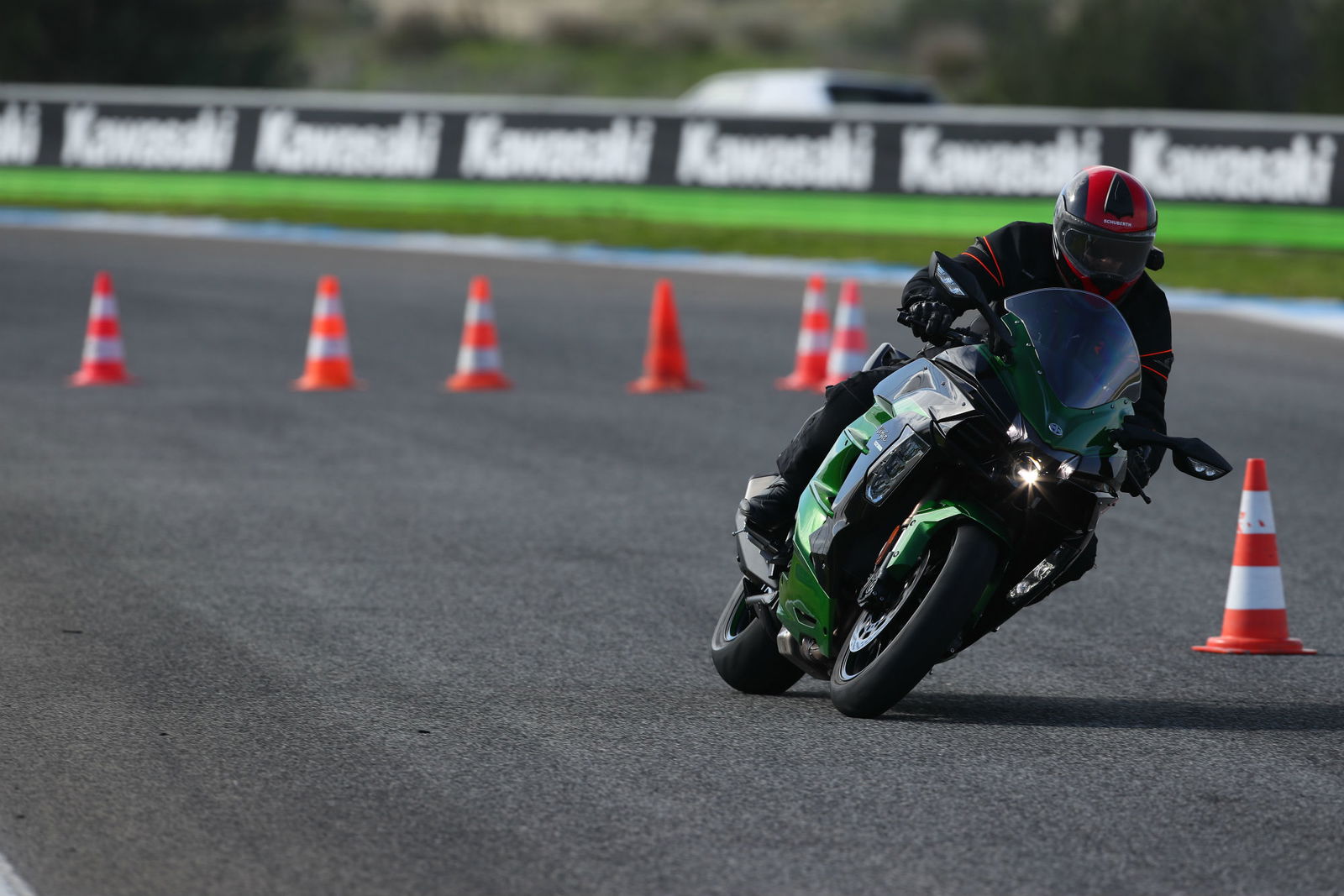
The riding position is exactly what it should be on a sports-tourer: sporty, but not extreme. The raised clip-ons are at a height to put a bit of weight on the arms but not too much for spending two or three hours in the saddle.
We did about four hours’ riding on day one and by the end I was beginning to shift around the in seat, despite it seeming well padded.
Suspension
The Ninja H2 SX gets fully-adjustable suspension front and rear, which is ‘supersport-sourced’ and designed for ‘a combination of ride comfort and sport performance ideal for street riding and touring,’ according to Kawasaki.
It seems a fair description. It’s as sporty sports-tourer springs probably ought to be, retaining sufficient comfort for a long haul on road surfaces smooth and rough. Faced with rapidly-changing demands, for example in the slalom test on track, it felt hard-worked, stretching to compose itself between turns.
Brakes
The four-piston radial-mounted front calipers provide braking that is among the most powerful and precise I think you will find, as they should on a machine of this power and weight. A gradual increase in pressure from one finger on the front lever is answered with impressive force.
The Ninja H2 SX comes with ‘Kawasaki intelligent anti-lock brake system’, or KIBS, which is ‘designed to take into account the particular handling characteristics of supersport motorcycles’ and includes cornering ABS.
The track exercises included a braking test, consisting of grabbing the front lever as firmly as possible from probably about 60mph. I felt the ABS activating, pulsing through the lever as the Bridgestone S21 front tyre struggled for grip, and the bike came to a controlled, rapid halt without the rear lifting.
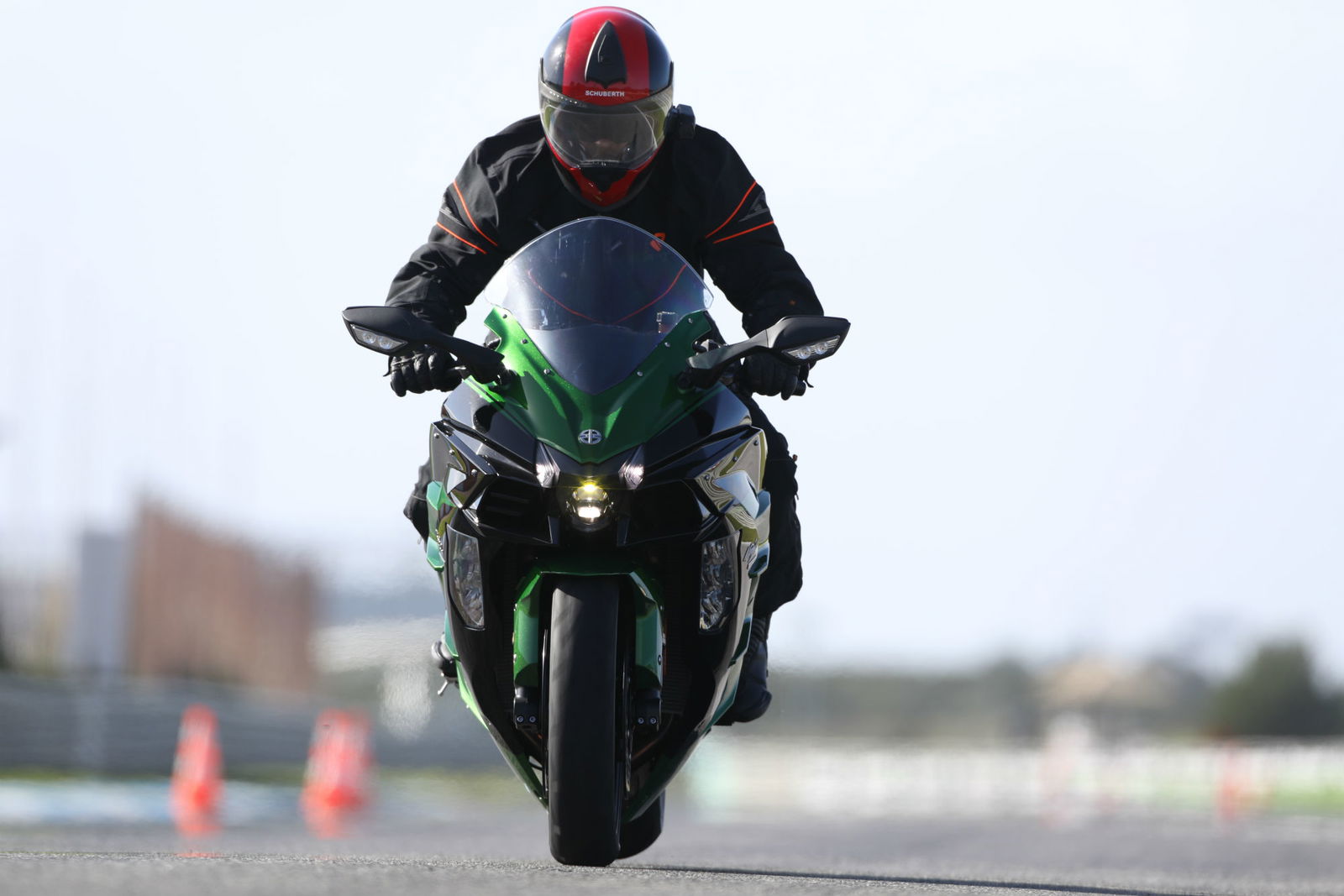
The track test also included runs down the straight, reaching around 170mph. A lot of stopping distance is needed for a 260kg bike going that speed and in one run I think I left it a little late. Inspired with confidence by the bike’s performance in the braking test, I wasn’t shy of grabbing the lever hard again, but now the response was different, and not so controlled.
The back lifted and the front seemed to lock. It found grip again, whether thanks to the ABS or me easing off the lever I don’t know. The rear came down, slightly off line, and the bike did a 120mph shimmy before settling down. For a moment, everything had gone ugly. You’ll be able to see it in the onboard footage in my video review. Startled by the episode, I overshot the end of the straight, not right into the gravel but the run-off area.
Equipment
As well as the power modes and cornering ABS, the Ninja H2 SX has multi-level traction control and engine-braking control, working in conjunction with an inertial measurement unit to adapt to lean angle and chassis pitch. It’s also got cruise control and an assist and slipper clutch.
On top of which, the SE edition has a TFT dash (Kawasaki’s first), quick-shifter, launch control and cornering headlights. The latter consist of three LEDs on either side of the fairing which illuminate according to lean angle.

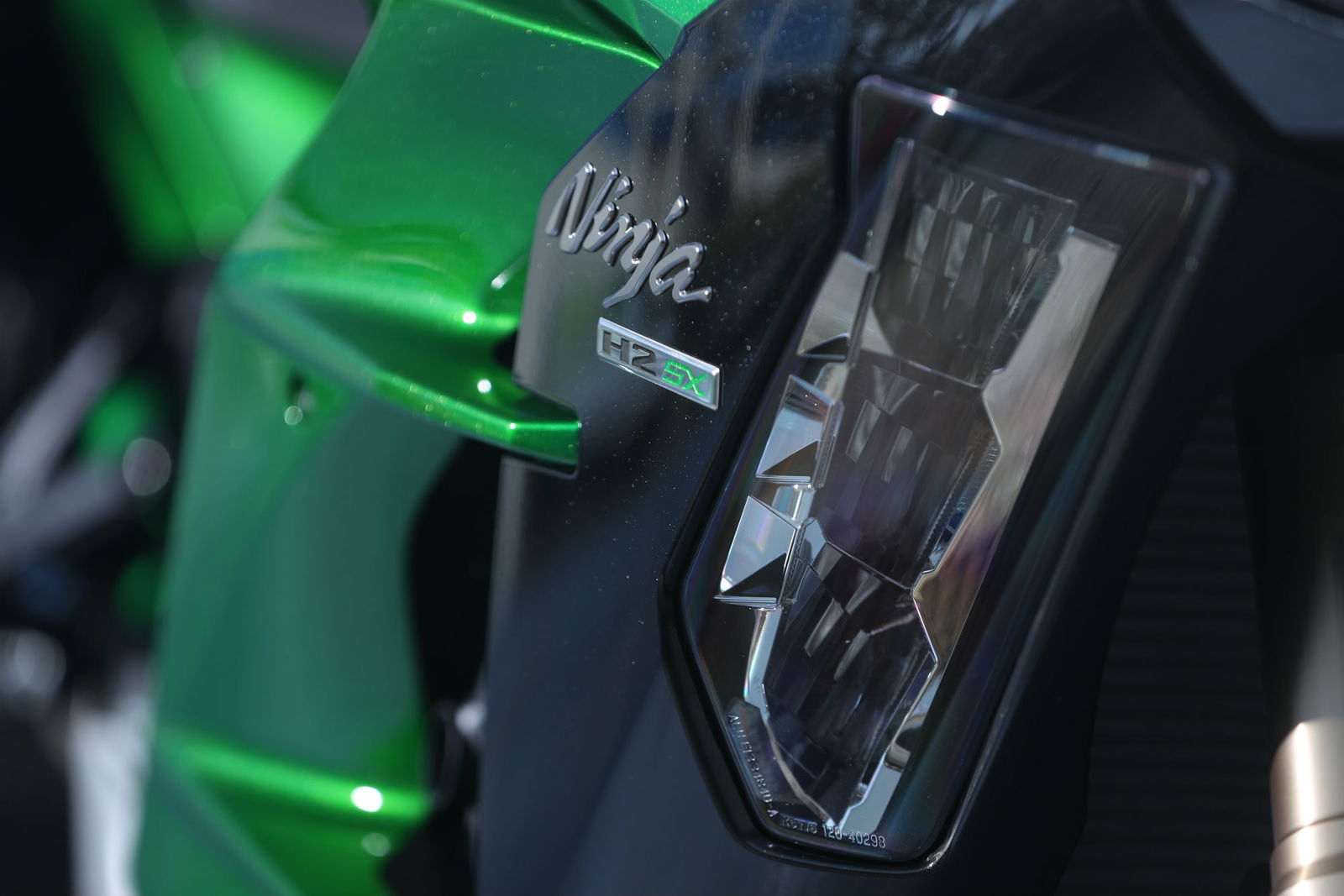
Other exclusive SE features include the taller screen, heated grips, 12v power socket, centre-stand and green paint.
The launch-control feature means that, from a standstill, you can hold the throttle wide open and simply let the clutch out, and the electronics will worry about the detail.
It limits revs to about 6,000rpm, no doubt because higher would make spinning-up inevitable. You’re supposed to very quickly ease out the clutch, rather than just dump it. In practice, it’s difficult to bring yourself to let go of it as quickly as you know the electronics will let you. It doesn’t feel right to be so rash on a 200hp bike with the rev counter needle bouncing at around 6,000.
Nevertheless, during two acceleration tests on track, it got me off the line with no spin, lift or requirement for skill, and faster than I’d have been able to using judgement alone.
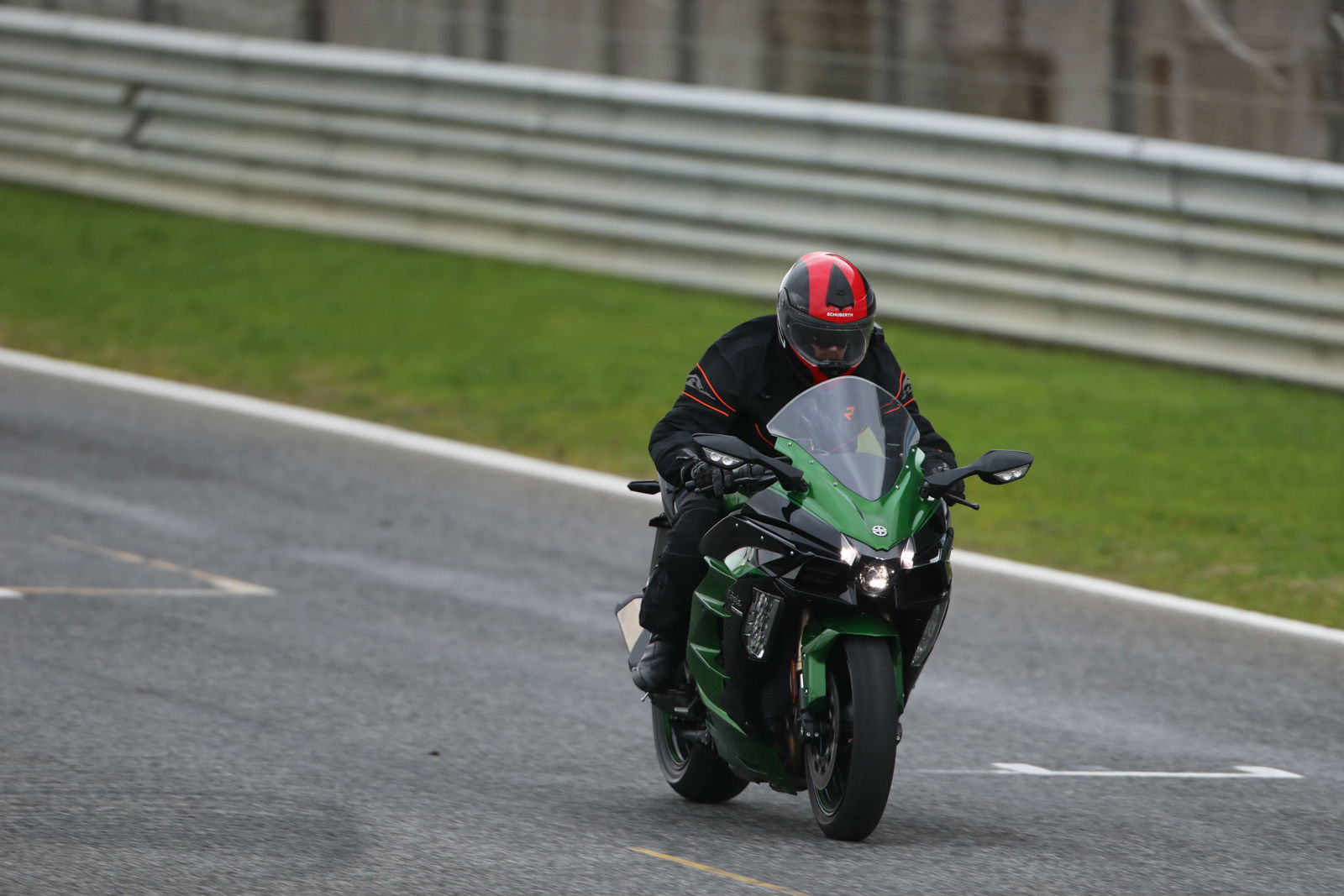
The quick-shifter, which works on up- and down-changes, means all you have to do is notch it up with your foot five times down that straight and watch the change-up light flashing as the needle hovers above 10,000rpm in each gear. And the end of the straight, of course. Don’t forget about that.
It’s not the absolute smoothest up/down quick-shifter I’ve tried. That might go to the one on Suzuki’s GSX-R1000. It’s not far off though.
We like
That’s it quite difficult to flaw this bike beyond the points I’ve already made. I could say again that it felt a bit sluggish sometimes on twisty roads on day one, but it proved itself on day two, with those optional panniers gone, each of which is big enough for a full-face helmet. Just don’t approach it expecting it to be more litre-bike sports-tourer than ZZR1400.
Then there’s the on/off throttle feel in full power mode, such a common problem nowadays. And of course that peculiar behaviour of the ABS when I braked late at high speed on the straight.
Beyond that, a very tall rider – well over six-foot – was complaining during the launch ride of insufficient wind protection. Not me, at 5’9”.
And a couple of racer types complained of a bit too much back-torque on downshifts. Again, it wasn’t a concern of mine, no doubt because I wasn’t riding quite so aggressively. Neither, I think, will it worry the average sports-tourer rider.
I found myself looking for faults in the detail. For example, the mirrors possibly show a bit too much of your elbows. All things considered, that’s the sign of a good bike.
We don’t like
When a machine is this advanced, and this well-equipped, maybe it should also have semi-active suspension, adjusting damping to conditions on the go. I think a weighty-ish sports-tourer is exactly the kind of machine that benefits most from the versatility it provides.
Of course, that would mean paying more. As it is, the base-model Ninja H2 SX starts from £15,099 and the SE edition from £18,099.
Verdict
Despite an all-round high-level of competence, the Ninja H2 SX’s jewel remains its super-charged engine, delivering ZZR power but with better fuel economy. The average fuel-consumption meter said 47.8mpg by the end of the road ride on day one, meaning a range of about 200 miles from the 19-litre-tank.
That’s the future of supercharging. Not just extreme power, and not ever-increasing engine capacities, but better performance and economy from the capacities we’ve got. That’s why the Ninja H2 SX is probably the most exciting new bike of the year.

Kawasaki Ninja H2 SX SE specifications
Model tested: Kawasaki Ninja H2 SX SE
Price: from £18,099 (base model £15,099)
Engine: 998cc supercharged in-line-four
Power: 200hp @ 11,000rpm
Torque: 101lbft @ 9,500rpm
Kerb weight: 260kg (base model 256kg)
Frame: steel trellis
Brakes: four-piston monobloc radial-mounted front calipers on twin 320mm discs; two-piston rear caliper on 250mm disc.
Suspension: 43mm upside-down fork with rebound and compression damping, spring preload adjustability and top-out springs. Uni-Track gas-charged shock with piggyback reservoir, compression damping, rebound damping, remote spring preload adjustability and top-out spring.
Tyres: Bridgestone S21s, front 120/70-17, rear 190/55-17
Tank capacity: 19 litres
Seat height: 835mm
Service intervals: first at 600 miles, every 7,600 miles thereafter
Colours: green/black (base model: grey)
Availability: late March 2018
